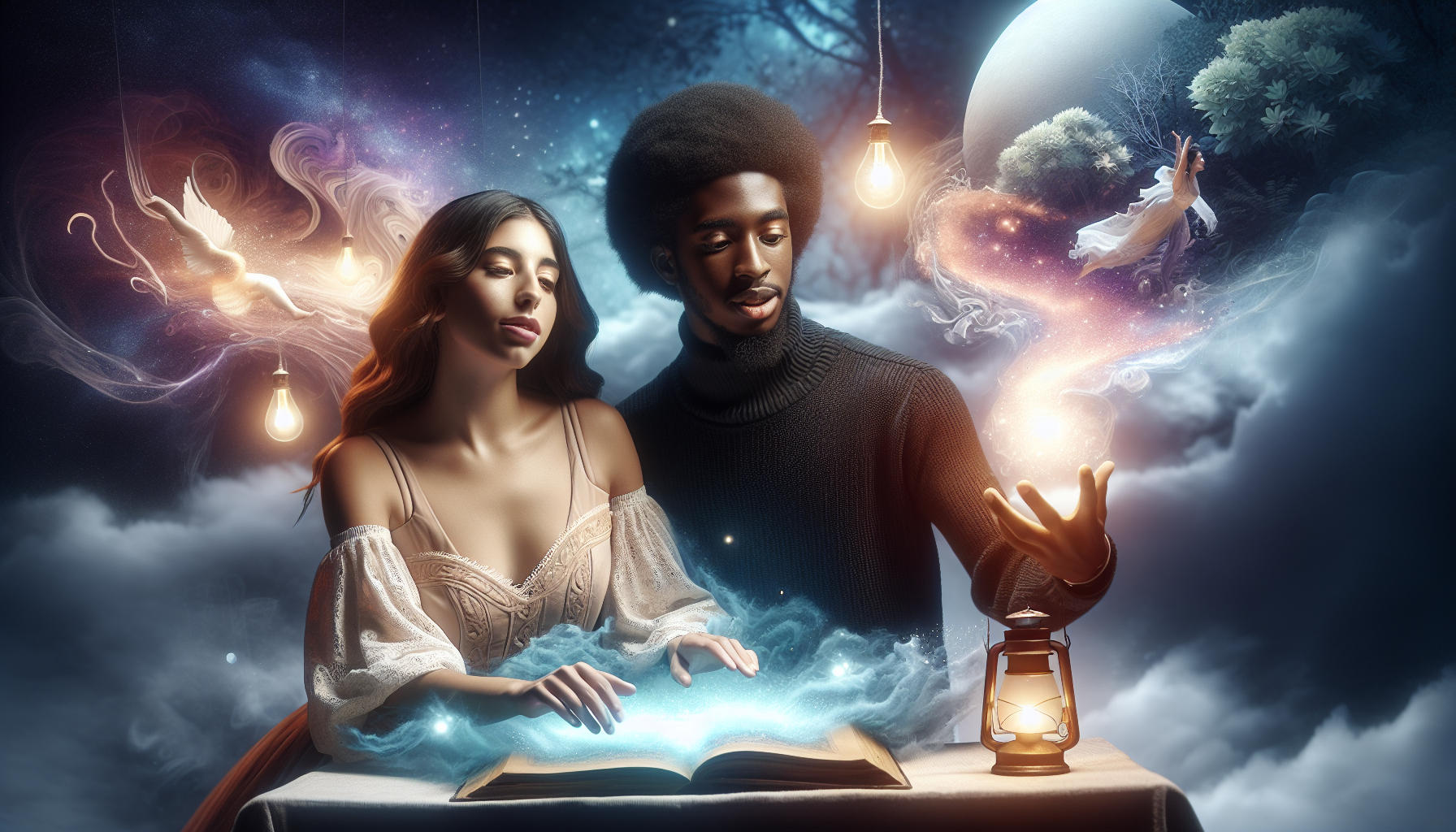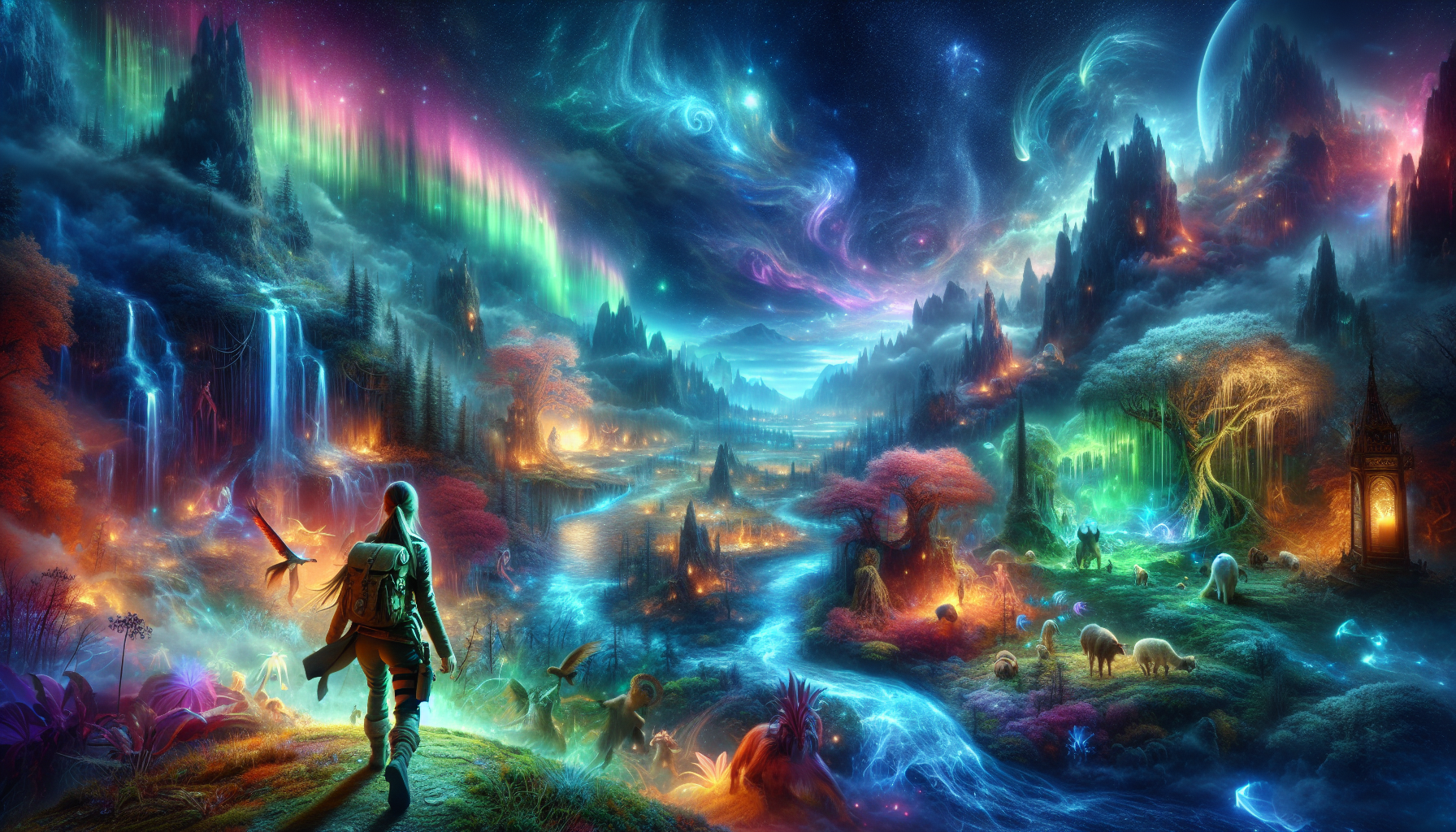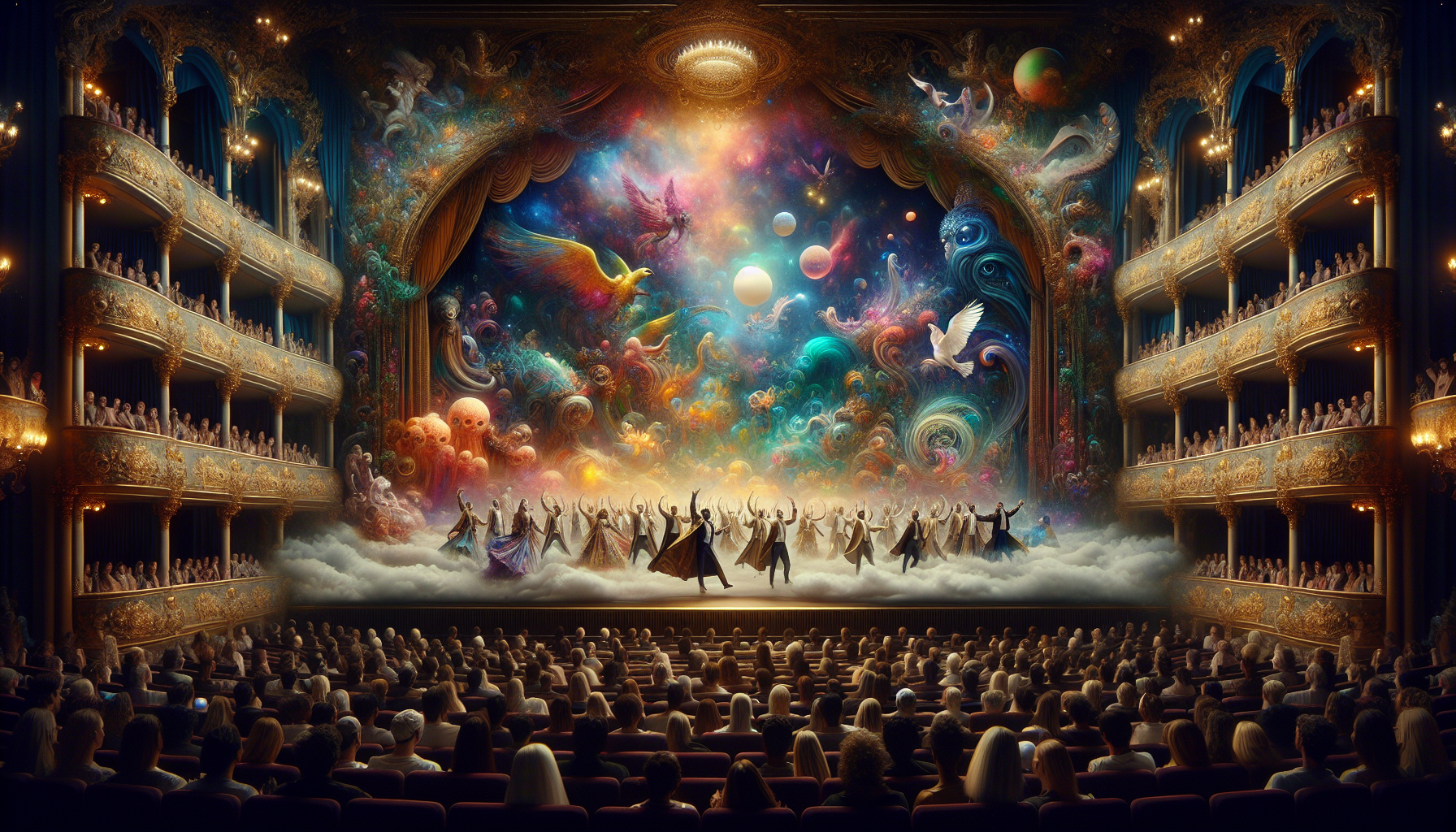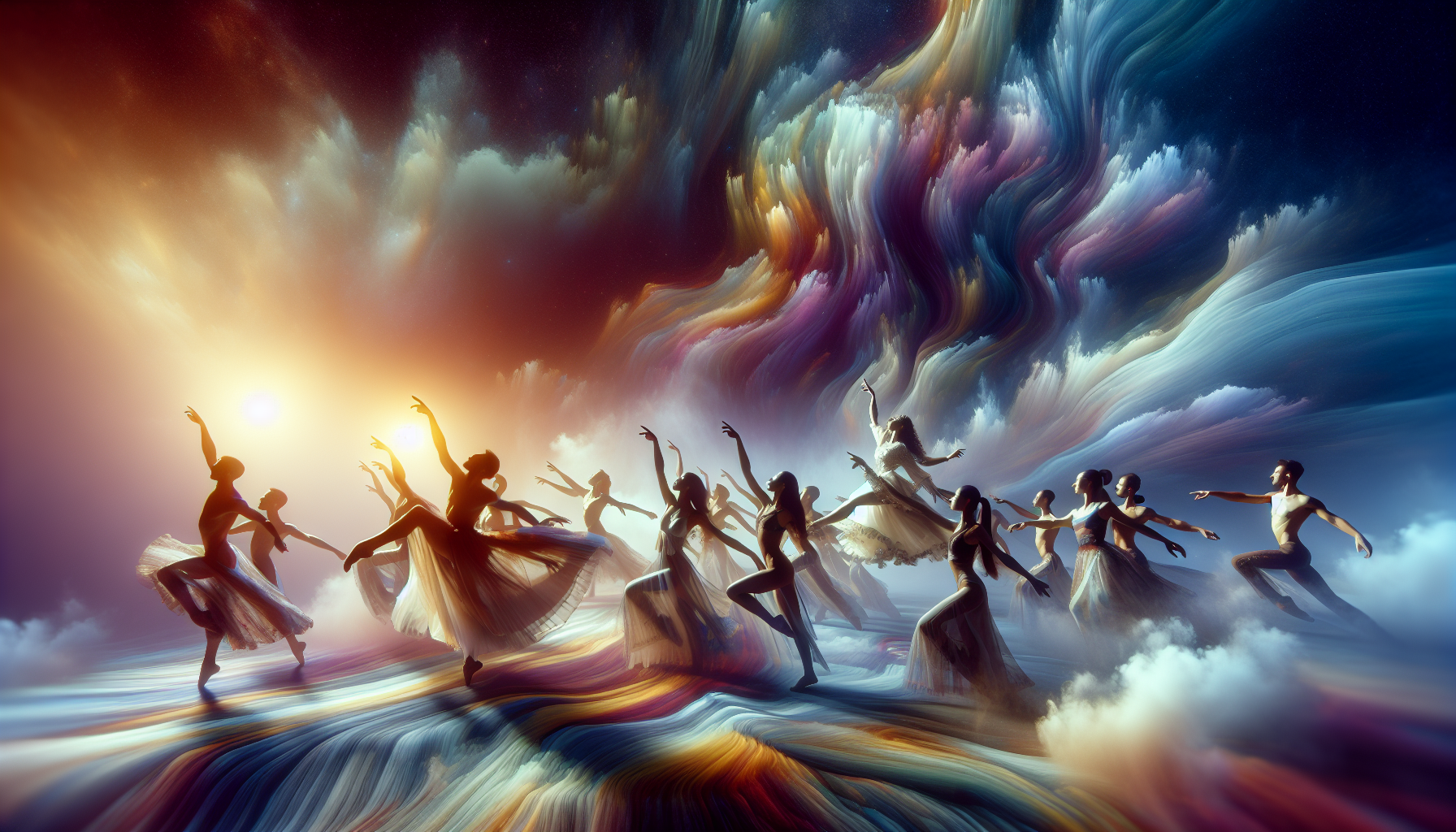In a world where the boundaries of reality are constantly being pushed, the concept of dreams has always held a special place in the human psyche. Dreams have been a source of mystery, inspiration, and intrigue for centuries. From ancient civilizations to modern psychology, the enigma of dreams continues to captivate our collective imagination. Among the many facets of dream exploration, one phenomenon stands out for its extraordinary potential and profound implications: lucid dreaming. More specifically, the idea of shared lucid dreams—a concept that blurs the lines between individual experiences and collective consciousness—invites us to reconsider what we know about the dream world and our interconnectedness. 🌌
Imagine, if you will, drifting off to sleep only to find yourself in a vivid dream where you are fully aware of your dreaming state. Now, imagine meeting a friend within this dream, and upon waking, discovering that they too had the same experience. This is the tantalizing premise of shared lucid dreams, an area of dream study that oscillates between fact and fiction, science and speculation. While lucid dreaming itself has been a subject of scientific inquiry, the notion of shared dreams remains a controversial and elusive topic. Some dismiss it as mere coincidence or fantasy, while others argue for its potential based on anecdotal evidence and emerging research.
As we delve into this fascinating topic, we will explore the foundations of lucid dreaming and its unique characteristics that make shared experiences plausible. We’ll begin by examining the science of lucid dreams, understanding how they occur, and the techniques that can enhance our ability to experience them. From there, we’ll venture into the realm of shared dreaming, analyzing historical accounts, cultural references, and the current scientific understanding of this phenomenon. The intersection of neuroscience and psychology provides a framework for exploring how shared lucid dreams might occur and what they could mean for our understanding of consciousness.
Moreover, we’ll look into the stories and testimonies of those who claim to have experienced shared lucid dreams. These narratives, while varied and often subjective, provide a window into the human experience and challenge us to question the nature of reality itself. Are these experiences mere tricks of the mind, or do they hint at a deeper, perhaps spiritual connection between individuals? 🤔 We will also consider the implications of shared dreaming on our understanding of relationships, empathy, and the potential for collective healing.
Finally, as we separate fact from fiction, we will contemplate the future of dream research and its potential to unlock new dimensions of human experience. Could advancements in technology and science bring us closer to validating the existence of shared lucid dreams? What ethical considerations arise from such possibilities? This article aims to not only inform but also inspire curiosity and open-mindedness towards one of the most intriguing mysteries of the human mind. Join us as we unlock the mystery of shared lucid dreams and explore the delicate dance between the known and the unknown.
Introduction to Shared Lucid Dreams
Shared lucid dreams are a fascinating phenomenon that captures the imagination of both dream enthusiasts and researchers alike. In these dreams, two or more individuals claim to experience the same dream environment simultaneously, with mutual awareness and interaction. This concept challenges our understanding of both the subconscious mind and the nature of reality. While the idea of shared dreams has been a popular theme in literature and cinema, its validity and underlying mechanisms remain subjects of debate within scientific communities.
The allure of shared lucid dreams lies in their potential to connect people on a subconscious level, offering a unique way to explore the depths of the human psyche. Such dreams can be seen as a bridge between the individual and collective consciousness, providing insights into how our minds might communicate beyond the constraints of physical reality. However, the line between fact and fiction can often blur, making it essential to delve deeper into the mechanisms, reports, and research surrounding this intriguing topic.
Throughout history, there have been countless anecdotal reports of shared lucid dreams, with participants describing similar dreamscapes, characters, and even conversations. These accounts have sparked curiosity and skepticism, prompting questions about their validity and how they might occur. Are these experiences mere coincidences, or do they suggest a deeper, interconnected aspect of human consciousness? In this article, we will explore these questions, examining the evidence, theories, and personal accounts that shed light on the mystery of shared lucid dreams.
The Science Behind Lucid Dreaming
Lucid dreaming itself is a well-documented phenomenon where the dreamer becomes aware that they are dreaming and can potentially exert control over the dream narrative. This state of consciousness opens up a world of possibilities, allowing dreamers to explore their subconscious mind with clarity and purpose. Scientific studies have shown that lucid dreaming occurs during the rapid eye movement (REM) stage of sleep, a phase associated with vivid dreams and heightened brain activity. Techniques to induce lucid dreaming include reality testing, mnemonic induction, and wake-initiated lucid dreaming, each offering different pathways to achieving lucidity within the dream world.
Research into lucid dreaming has provided valuable insights into the workings of the human mind. Studies utilizing EEG and fMRI technology have demonstrated that certain areas of the brain become highly active during lucid dreaming, particularly those associated with self-awareness and decision-making. This heightened state of consciousness suggests that lucid dreaming could serve as a tool for psychological exploration and therapy, offering potential benefits for mental health and personal development.
While lucid dreaming is a well-established phenomenon, the concept of shared lucid dreams remains more elusive. One of the primary challenges in studying shared dreams is the subjective nature of the experience. Personal interpretations of dreams can vary widely, making it difficult to ascertain whether two individuals truly shared the same dream or simply had similar experiences. Despite these challenges, some researchers are exploring the potential of shared dreaming as a means of understanding the interconnectedness of human consciousness. Could shared dreams be a manifestation of quantum entanglement, or are they simply a result of coincidence and suggestion? These are questions that continue to intrigue both scientists and dreamers alike.
Exploring Theories of Shared Lucid Dreams
Theories surrounding shared lucid dreams often touch upon areas of psychology, neuroscience, and even quantum physics. One prevalent theory suggests that shared dreams could be a result of telepathic communication, where two minds connect on a subconscious level, sharing thoughts and experiences within the dream state. This idea is reminiscent of Carl Jung’s concept of the collective unconscious, a universal repository of memories and archetypes shared by all human beings. Jung believed that the collective unconscious could explain why people from different cultures often report similar dream symbols and themes, suggesting a shared psychic foundation.
Another theory proposes that shared dreams might occur through synchronization of brain waves between individuals. This hypothesis suggests that when two people sleep in close proximity, their brain waves could become synchronized, leading to similar dream experiences. This concept, known as inter-brain synchronization, has been observed in other contexts, such as musical ensembles and parent-infant interactions, where individuals’ brain activities align during shared experiences. Could the same mechanism be at play in shared lucid dreams, allowing for a shared dream narrative?
While these theories offer intriguing possibilities, empirical evidence supporting the existence of shared lucid dreams remains scarce. Much of the evidence comes from anecdotal reports and personal testimonies, which, while compelling, lack the scientific rigor needed to substantiate such claims. Nevertheless, the continued interest and exploration into shared dreams highlight the human fascination with the potential for deeper connections and understanding within our subconscious minds.
Comparative Analysis of Dream Theories
| Theory | Key Concept | Evidence | Challenges |
|---|---|---|---|
| Telepathic Communication | Minds connect on a subconscious level | Anecdotal reports | Lack of empirical data |
| Inter-brain Synchronization | Brain waves synchronize during sleep | Observed in other shared experiences | Limited direct research on dreams |
| Collective Unconscious | Shared psychic foundation | Cultural similarities in dreams | Abstract and difficult to measure |
To further explore the fascinating subject of shared lucid dreams, consider watching the video titled “The Science of Lucid Dreaming” by Science Channel. This video delves into the mechanics of lucid dreaming, providing a deeper understanding of how our minds can navigate the dream world.
Case Studies and Anecdotal Evidence
While scientific research on shared lucid dreams is limited, numerous anecdotal accounts and case studies provide a glimpse into the experiences of those who claim to have participated in shared dreams. These stories often involve friends, family members, or even strangers who report remarkably similar dream experiences. The similarities range from shared dream settings and characters to synchronized actions and conversations, suggesting a level of interconnectedness beyond mere coincidence.
One well-known case involves two friends who reported having the same dream about exploring a mysterious, otherworldly city. In their dream, they communicated telepathically, shared the same sense of wonder, and even described identical architectural details. Upon waking, they were astonished to discover the extent of their shared experience, leading them to believe that they had somehow entered a shared dreamscape.
Such accounts raise intriguing questions about the mechanisms that might facilitate shared dreaming. While skeptics argue that these stories can be explained by chance or suggestibility, proponents of shared dreams point to the consistency and detail of these reports as evidence of a deeper phenomenon. Could there be an as-yet-undiscovered aspect of human consciousness that allows for such experiences? As researchers continue to investigate the nature of shared dreams, the stories of those who have experienced them serve as a valuable resource for understanding this enigmatic phenomenon.
Exploring Personal Accounts
- Friends exploring identical dreamscapes and communicating telepathically.
- Family members experiencing synchronized dreams with shared narratives.
- Strangers reporting similar dream symbols and themes after meeting.
The exploration of personal accounts and case studies offers valuable insights into the potential for shared lucid dreams. By examining these stories, we can better understand the nuances and possibilities of shared dreaming, shedding light on the mysterious connections between our subconscious minds.

Conclusion
Unlocking the Mystery: Exploring Shared Lucid Dreams – Separating Fact from Fiction
As we reach the conclusion of our exploration into the fascinating realm of shared lucid dreams, it’s essential to revisit the key points we’ve traversed on this captivating journey. We’ve delved into the complexities of lucid dreaming itself, examined historical and cultural perspectives, and scrutinized scientific investigations that attempt to unravel the enigma of shared dreaming experiences.
Firstly, we established a foundational understanding of lucid dreams. These are dreams in which the dreamer becomes aware of the fact that they are dreaming, often gaining a level of control over their actions within the dream. This ability to influence the dream’s narrative offers a unique intersection of consciousness and subconsciousness, making it a topic of significant intrigue.
Moving forward, we explored the phenomenon of shared lucid dreams—an idea that suggests two or more individuals can participate in the same dream environment simultaneously. Historically, many cultures have narratives and folklore that touch upon the possibility of shared dreaming. These stories often emphasize the mystical and communal aspects of dreaming, reinforcing the longstanding human fascination with the concept.
From a scientific perspective, shared lucid dreams remain largely a mystery. While anecdotal evidence and personal testimonies abound, empirical research has struggled to provide conclusive evidence supporting their existence. Studies in the field of neuroscience and psychology have made strides in understanding how lucid dreams occur and how they might be influenced, yet the shared aspect remains elusive. The challenge lies in the subjective nature of dreams and the difficulty in objectively measuring shared experiences.
Despite these challenges, the pursuit of understanding shared lucid dreams continues to captivate researchers and dream enthusiasts alike. Emerging technologies, such as brain imaging and virtual reality, offer promising avenues for future exploration. These tools could potentially provide deeper insights into the mechanics of dreaming and the possibility of interconnected dreamscapes.
In reinforcing the importance of this topic, we must recognize the broader implications of shared lucid dreaming. It challenges our understanding of consciousness, reality, and the boundaries of human connection. If proven possible, shared dreams could revolutionize our approach to therapy, communication, and even creativity. They hold the potential to foster deeper empathy and understanding among individuals by offering a direct experience of another’s perspective.
As we conclude, I encourage you to reflect on the information presented and consider the possibilities that shared lucid dreams might hold. Whether you are a skeptic or a believer, the exploration of this topic invites us to question the limits of our knowledge and to remain open to the wonders of the human mind. Feel free to share your thoughts and experiences in the comments below, or engage with others to broaden the discussion. Sharing this article with friends or communities interested in dreams could spark fascinating conversations and lead to new insights.
Let’s continue to explore the vast landscape of our dreams, keeping an open mind to what we might discover. 🌌
For further reading, you may explore resources from reputable sources such as:
–
–
– The Sleep Foundation’s insights on lucid dreaming
Thank you for joining us on this journey through the mysteries of shared lucid dreams. 🌙
Gabriel is a visual storyteller and dream archivist whose work explores the fragile boundary between memory and imagination. Through layered visuals and symbolic design, Gabriel captures the fleeting essence of dreams — those strange, beautiful, and sometimes haunting fragments that drift through sleep and linger in waking thought.
His creative journey is rooted in a deep fascination with the subconscious and the imagery it conjures. From half-remembered landscapes to recurring symbols and surreal encounters, each piece Gabriel brings to life becomes a portal into the inner archive — where time distorts, meanings shift, and personal mythology takes form.
With a background in handcrafted artistry and visual composition, Gabriel merges intuition with intention. His work doesn’t merely depict dreams; it preserves them, translating ephemeral moments into tangible expressions that evoke emotion, curiosity, and quiet revelation. Each visual is both a record and an invitation to explore the rich terrain of inner life.
Through illustrated dream journals, symbolic studies, and visual essays, Gabriel invites others to connect with the poetic architecture of their subconscious landscapes. His art becomes a mirror — not only of what we see at night, but of what we carry deep within.
His work is a tribute to:
-
The fragile beauty of forgotten dreams
-
The language of symbols in the subconscious mind
-
The inner worlds we visit but rarely name
Whether you’re a lucid dreamer, a seeker of hidden meanings, or someone fascinated by the mystery of sleep-born stories, Gabriel welcomes you to step into a space where dreams are not lost — they are archived, one vision, one sketch, one silent narrative at a time.





